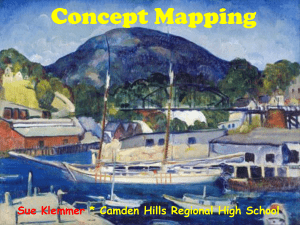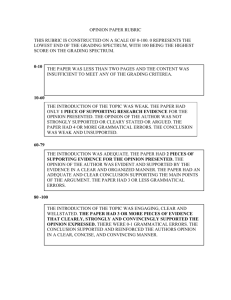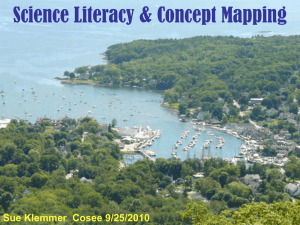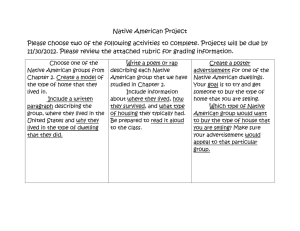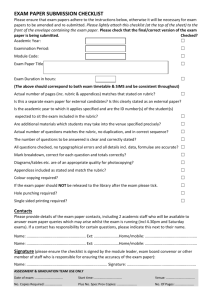Mapping Packet - New England Association of Chemistry Teachers
advertisement
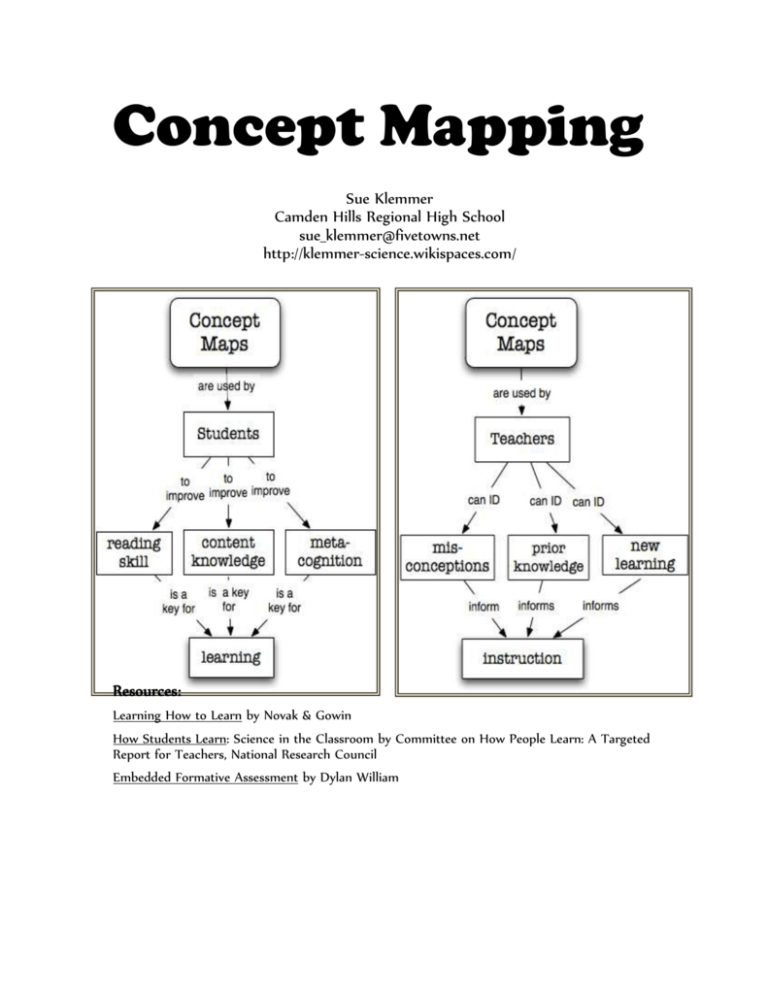
Concept Mapping Sue Klemmer Camden Hills Regional High School sue_klemmer@fivetowns.net http://klemmer-science.wikispaces.com/ Resources: Learning How to Learn by Novak & Gowin How Students Learn: Science in the Classroom by Committee on How People Learn: A Targeted Report for Teachers, National Research Council Embedded Formative Assessment by Dylan William What’s a concept map? concept maps show relationships between ideas, rather than definitions maps are visual tools that organize knowledge maps must have: o concepts: ideas in bubbles; nouns o links: labeled lines; verbs o these connect as “concept-link-concept” sentences Maps need a purpose avoid “mapping for mapping sake” know the purpose before you map o probe prior knowledge o get main ideas from a reading o pull different lessons together for review Map Technologies good technologies are easily edited & shared 1. 2. 3. 4. 5. paper & pencil whiteboards /benchtops sticky notes & string or chalk word processors software a. “Inspirations” b. “Omnigraffle” ME-MLTI Early Maps: 1. first maps should be simple & structured a. “Make a map from these 3 words: ___” b. “Make a map from these 3 words (___) plus two more concepts of your own from your reading ___.” c. “Make a map of 4-5 key words from reading ___.” 2. ways to make the “buy in” easier a. low stakes or no stakes grading b. peer editing & sharing; post exemplars c. focus on content, not mapping (“why are we doing this”?) 3. typical errors a. trying to turn the map into “term-and-definitions” b. “dependent links”: links that only make sense after reading another part of the map Basic Concept Map Rubric KISS! keep the stakes low o there’s no “√e = exceeds” o either no grade or a generic completion grade I would also include “All required concepts are present.” Consider the purpose and tailor the feedback: o is it about the map? o is it about the content? Basic Concept Map Rubric: sample #1 √m = standard met √p = standard partially met √n = standard not met √m √p √n All concepts are connected to another concept. √m √p √n All links are labeled. √m √p √n All links make grammatical sense. √m √p √n All links make scientific sense. Basic Concept Map Rubric: sample #2 √m = standard met √p = standard partially met √n = standard not met √m √p √n All concepts are connected to another concept. √m √p √n All links are labeled. √m √p √n All links make grammatical sense. √m √p √n All links make scientific sense. Hierarchy & Symmetry HIERARCHY requires students to prioritize the importance of ideas. SYMMETRY requires students to “chunk” knowledge into parallel pieces. This builds “HOTS” [higher order thinking skills]. Some students will do this intuitively, but it should not be pushed until basic skills are mastered. A more Advanced rubric: All required concepts are present. All concepts are connected to at least one other concept. Multiple links highlight a few significant cross-connections. All links are labeled and substantial. All links make grammatical sense & scientific sense. The map uses one of the following strategies: o hierarchy to show the relative importance of different concepts. o symmetry to show “chunking” of ideas into groups Peer Edit Basic Concept Map Rubric √m = standard met √p = standard partially met √n = standard not met √m √p √n All concepts are connected to another concept. √m √p √n All links are labeled. √m √p √n All links make grammatical sense. √m √p √n All links make scientific sense. Advanced Concept Map Rubric √m = standard met √p = standard partially met √n = standard not met √m √p √n All required concepts are present. √m √p √n All concepts are connected to at least one other concept. √m √p √n Multiple links highlight a few significant cross-connections. √m √p √n All links are labeled and substantial. √m √p √n All links make grammatical sense & scientific sense. √m √p √n The map uses one of the following strategies: hierarchy to show the relative importance of concepts. symmetry to show “chunking” of ideas into groups “Exit Slip” Concept Mapping Workshop NEACT Summer Conference 2011 * Sue Klemmer I teach: Check all that apply. ___ middle school ___ high school ___ college ___ chemistry ___ other sciences ____ mathematics other: My knowledge about concept mapping before this workshop was: low medium high My knowledge about concept mapping after the workshop is: low medium high I learned new skills in this workshop. strongly agree strongly disagree I am likely to have my students use concept mapping this year. strongly agree strongly disagree I liked the pair and teamwork format of this workshop. strongly agree Optional Comment: strongly disagree
